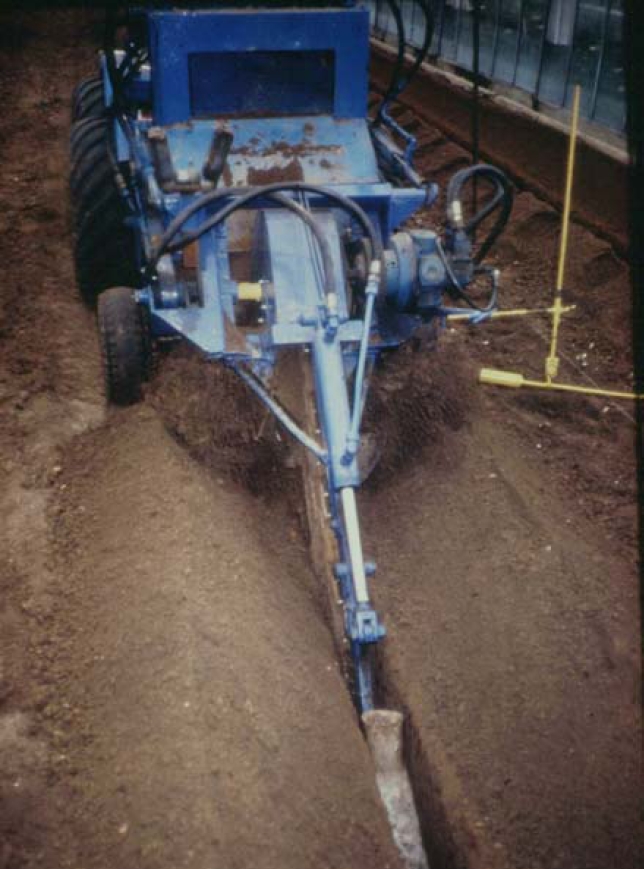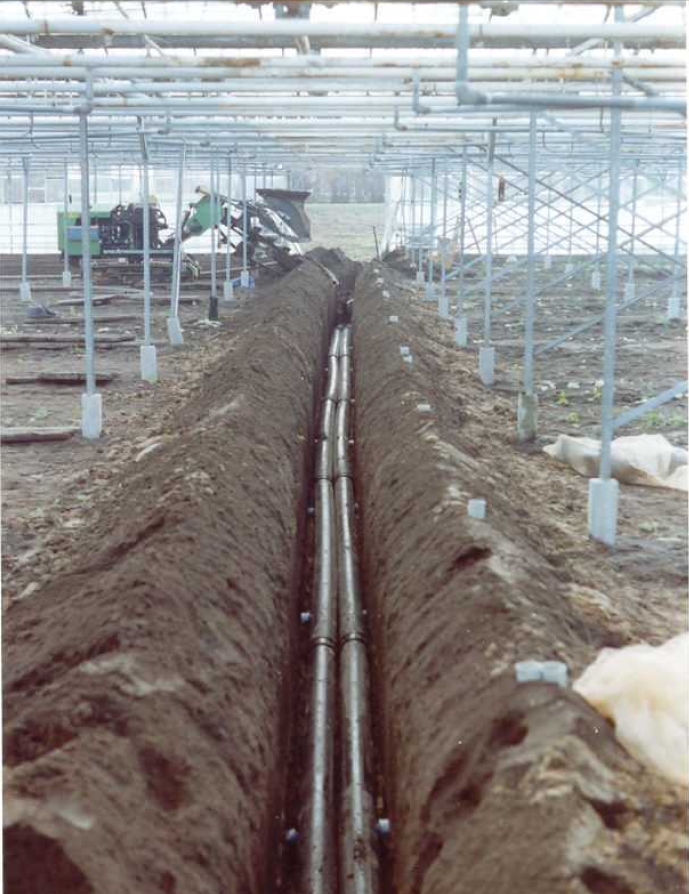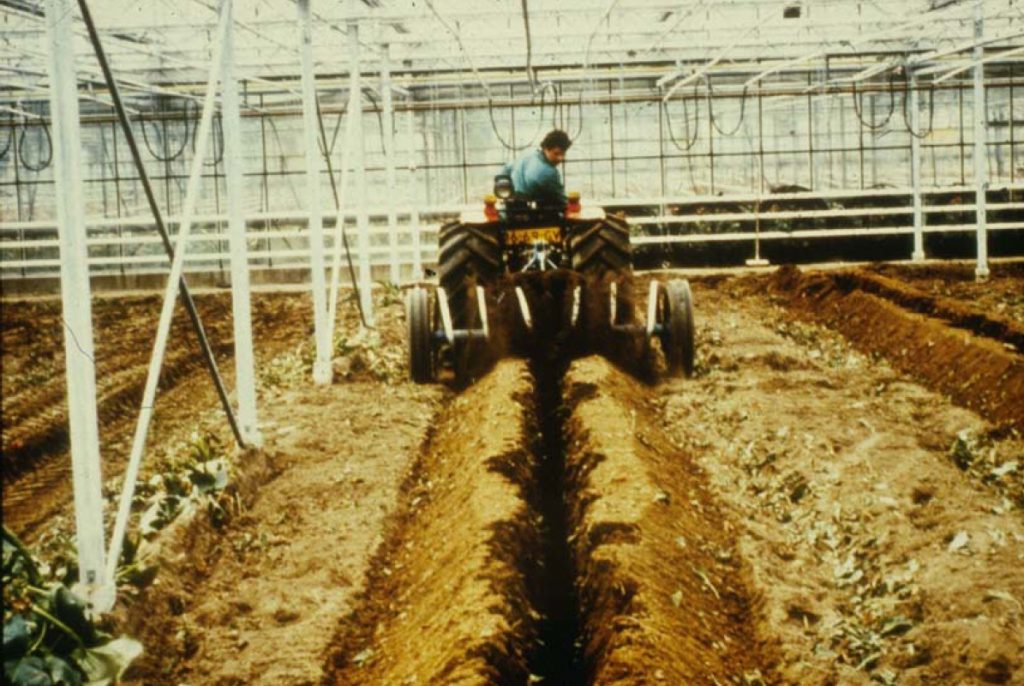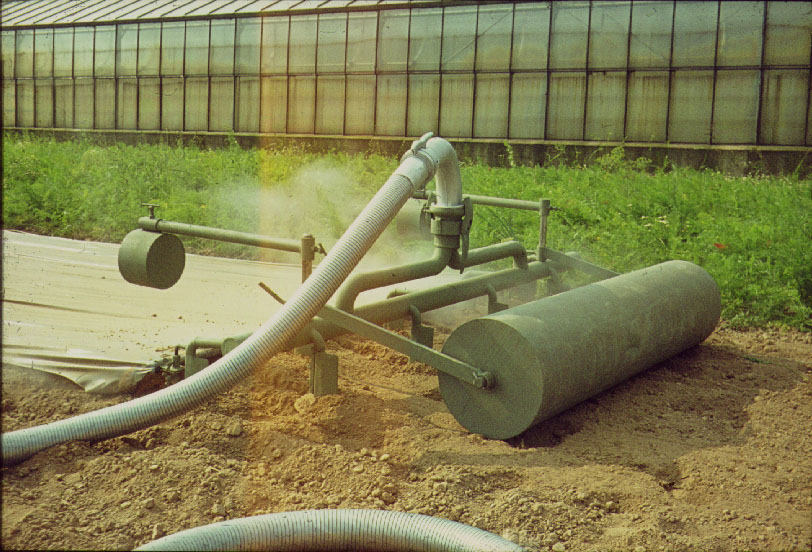Depth Steaming (Drainage etc.)
Today three depth steaming methods are known with which steam can be induced to deep levels of the soil down to 60 cm depth through the usage of drainage pipes, steaming plough and steaming harrow.
Already since the beginning of modern soil steaming mobile drainage pipes are used to induce steam into the soil. However, this method is very labor intensive. Hence growers have started to install drainage pipes made of heat resistant materials in loosened soil. These drainage systems are very different from case to case, since they are customized to the special local conditions and steaming requirements.

The following aspects have to be considered when installing drainage pipes:
On the one hand, the distance between the pipes as well as the distance between the steam openings have to enable the creation of a compact steaming front which can extend further to the surface during the steaming process. In practice the ideal distance between pipes proved to be 70% of the depth of the soil layer to be steamed. Steam opening should be placed offset in an inclined angle of 30° facing the top. Consequently steam is induced optimally and consistently to avoid steam deprived zones.

On the other hand, soil quality has to be suitable for steaming. Otherwise siltation occurs after several rounds of steaming in particular if soil is very fine which may lead to the plugging of steam openings or even the pipe system itself. Hence it is recommended to create a gravel or brick split bed around the fixed installed pipes and to separate them from cultivated soil through a coarse-grained layer of turf. Hence the possibility of intrusion of soil into the system can be ruled out.

Plough Steaming is a highly effective depth steaming sytem. However it’s very costly in practice.
If soil is loosened properly, steaming down to 60 cm/90°C depth can be achieved. Steaming width reaches up to 3,2m, which requires a steam output of 1.000 kg/h/plough. For post-steaming a steaming sheet of 10-15m length x width is dragged behind the plough. Steaming depth is fixed through the stabilizing roll which runs ahead. The plough is pulled by 2 steel ropes and a drive unit with stageless speed controller reaching between 5-15m/h. Drive power amounts to 0.5 PS through a 3 stage special gearing. Average work speed is about 10 m/h.

Steaming Harrows are one of the oldest steaming methods besides pipe systems. The hollow teeth which are attached on a fixed frame are mostly driven into soil manually through mere muscle power, then steam is induced. After steaming, the harrow is relocated to start a new steaming process until the complete beet is treated. The advantage of the method is the consistent induction of steam as well as penetration. Furthermore, teeth enable the induction of a large volume of steam into the soil which reduces steaming time and shows high effectivity due to little heat losses. Despite these advantages, harrow steaming is very labor intensive and takes a lot of strength. Thus this method is hardly used.
Depth Steaming (Drainage etc.)Depth Steaming (Drainage etc.)Today harrow steaming celebtrates its come-back in the form of spike hoods for Sandwich Steaming. The combination of surface and depth steaming provides a significant reduction of steaming time and energy consumption due to maximal minimization of heat losses.
